Spanish Moss is not edible. Well, barely an edible. The bottom of the growing tips (pictured above) provides about one eight of an inch of almost tasteless green. It probably takes twenty or thirty calories to get that little green tip which probably only provides less than a calorie of energy. It’s really not food. It’s a “hey, watch me eat this” kind of thing, a Boy Scout nibble. But it does have uses and since I am asked about Spanish Moss all the time here’s an article about it.
First let’s talk about red bugs and chiggers, microscopic irritations said to live on Spanish Moss. They might inhabit Spanish Moss but to be utterly frank I have never gotten chiggers from Spanish Moss in trees. I have handled it and been in it many times over the decades and not once have I gotten chiggers from Spanish Moss from trees. Where I have gotten chiggers is in open fields with knee-high grass. I’ve gotten also them in knee-high brush. I have gotten them in knee-high grass and knee-high brush often enough to avoid said. But not from Spanish Moss in trees. I am not saying it’s not true. I am saying it has never happened to me. You can, however, get chiggers from Spanish Moss on the ground. When I do get chiggers I cover the wound with clear fingernail polish. Yes, it stings and but it works for me and has for over 40 years. A thick skin lotion might work as well. Treating chigger bites is a surprisingly controversial topic involving a lot of hardcore angry fanatics. Some authorities say the bug bites and hangs around thus smearing something on it is a good idea. A vote for fingernail polish. Others say nonsense, the bug bites and is gone and simple washing will do. Thus fingernail polish or any ointment is wives’ tale and nonsense. Frankly I am weary of the derogatory emails I get about it. Getting rid of the itch is what’s important and that is what I do. Now, what of Spanish Moss?
Spanish Moss — which isn’t a moss — was used to stuff car seats and furniture not only in the United States but Europe as well. It was chemically stripped of its outer gray bark and use for that purpose up until about 1960. In 1939, for example, 10,000 tons of it was raked from trees in Florida and Louisiana. It is not a parasite but an epiphyte so it doesn’t harm the tree unless it grows so prolifically to shade the tree from sunlight. Natives used it to make bedding and emergency clothes when cloth was unavailable. The inner black core was spun and used as thread. A bundle of stripped moss also makes excellent tinder. One can find them easily in local woods.
Spanish Moss is in the Pineapple family. Oral extracts of Tillandsia usneoides in a few studies have reduced blood glucose in laboratory animals. The chemical responsible is 3-hydroxy-3-methylglutaric acid. Called HMG it’s found in some diabetic supplements. Traditionally T. usneoides was brewed into a tea to treat fevers, chills, rheumatism and contraction pains of childbirth. Other claims for it include treatment of infant epilepsy, estrogen substitute, and antibacterial uses. In 2004 a Japanese company reported an extract strengthen and protects skin capillaries and slows skin cells decline. I don’t know if that is true but they took out a patent on it.
Why is it called Spanish Moss? There is an explanation but it’s on linguistic quicksand. It is said the Spanish had beards and the moss looked like their beards so it was called Spanish Moss. But… the term “Spanish Moss” seem to be rather late day innovation. As early as 300 years ago it was called Old Man’s Beard, White Beard and Spanish Beard. Detect a theme there? Other names included Florida Crape and Wool Crape. It’s found in the southern United States, the Caribbean, Hawaii and Australia, where it was introduced.
The botanical name, Tillandsia usneoides (til-LAND-sia oos-knee-OY-deeze) has an interesting background. Usneoides means “looks like usnea” which is a small, edible lichen. Tillandsia honors Erici (or Elias) Tillands, 1640-1693, a physician and professor who was extremely frightened of water. He would take a long journey on foot rather than take a short boat trip to the same destination. Linnaeus — the guy who started naming plants — was told Spanish Moss only grows in dry areas so he named it after Tilland. The irony is that in only grows in humid areas.
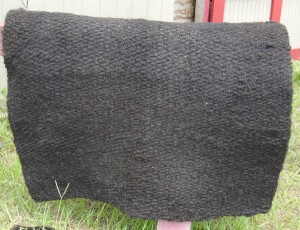
Spanish Moss Horse Blanket, at glennpierdepot
Other uses for Spanish Moss include: Lids for cooking pots, emergency blankets, insulation, mixed with clay to strengthen plaster, used to fire pots, used in tanning and to skim scum off cooking liquids, fiber woven into floor mats, to make string, rope and sacks, fire arrows to destroy invaders’ forts, doll decorations and Voodoo doll stuffing. It can be soaked — a natural sponge — and used as a covering to keep things from drying too fast, such as dug out canoes and cement. It also makes excellent mulch and the water it is boiled in is excellent fertilizer. Spanish Moss is often draped on chain link fences to create privacy. To easily clean the bark off the fiber soak the Spanish Moss in water for six weeks. Or, you can throw it into a pile for about six months where it will rot naturally. A third option is to rub Spanish Moss with Spanish Moss to get rid of the coating.
Birds like to nest in it, particularly Warblers and the Baltimore Oriole. Rat Snakes and at least three bats call it home. Some livestock will eat Spanish Moss. One jumping spider, Pelegrina tillandsiae, is found only on Spanish Moss. Jumping spiders, by the way, are bight little creatures with at least two large eyes out of the eight. They are hunters, colorful, and often kept as pets. I used to feed one using tweezers and blind deceased mosquitoes.
There is also Ball Moss. Tillandsia recurvata, right, is similar to Spanish moss except it is compact and has larger growth, which also makes it easier to get an edible nibble. It blooms in the spring with a blue-violet flower and tends to be about the size of a baseball but can be smaller or much larger. Sensitive to freezing Ball Moss can be found from the southern United States to Argentina and Chili. Medicinally an extract has shown the ability to cause death of tumor cells.
Green Deane’s “Itemizing” Plant Profile: Spanish Moss
IDENTIFICATION: Tillandsia usneoides: Spanish-moss is a fibrous, perennial, epiphytic herb. It hangs from trees in long, thick masses that may reach 20′ in length. The leaves are grayish-green, narrowly linear, and up to two inches long. It looks like filaments with many branches and is covered with silvery-gray scales. The flowers are tiny with pale greenish-blue blossoms. They form in the axils of the leaves and may give off a light fragrance at night. Te flowers lead to tiny capsules which split open to release even smaller seeds.
TIME OF YEAR: Year round
ENVIRONMENT: Spanish Moss grows well in full sun but endures partial shade. It prefers moist environments 50 to 90ºF but can survive well in dry habitats too. Spanish Moss is usually found on oaks or cypress trees — it likes the chemicals that leach form the trees’ bark — but can be found on other species such as pine or sweet gum.
METHOD OF PREPARATION: Growing tips are pulled out of their sheath. The tiny green tip can be eaten raw.
Lyrics to Spanish Moss by Gordon Lightfoot
SPANISH MOSS
Let go darlin’
I can feel the night wind call
Guess I’d better go
I like you more than half as much
As I love your Spanish moss
Spanish moss hangin’ down
Lofty as the southern love we’ve found
Spanish moss
Keeps on followin’ my thoughts around
Georgia pine and Ripple wine
Memories of Savannah summertime
Spanish moss
Wish you knew what I was sayin’
So I’m rollin’ north thinkin’
Of the way things might have been
If she and I could have changed it all somehow
Spanish moss hangin’ down
Lofty as the sycamore you’ve found
Spanish moss
Keeps on followin’ my thoughts around
Georgia pine and Ripple wine
Kisses mixed with moonshine and red clay
Spanish moss
Wish you knew what I was sayin’
So I’m rollin’ north thinkin’
Of the way things might have been
If she and I could have changed it all somehow
Let go darlin’
I can feel the night wind call
The devil take the cost
I like the way your kisses flow and I love your Spanish moss

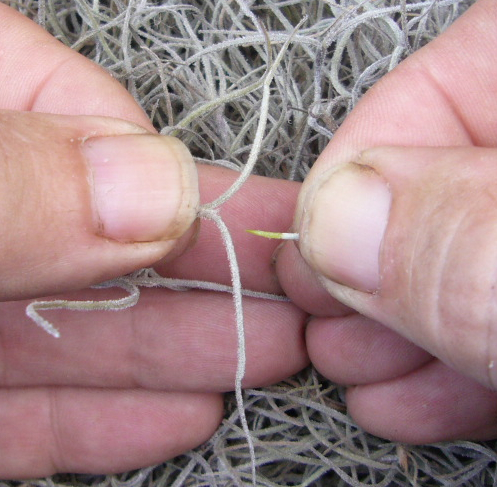
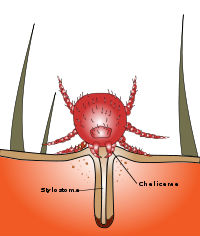
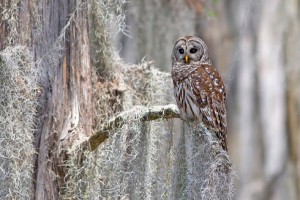
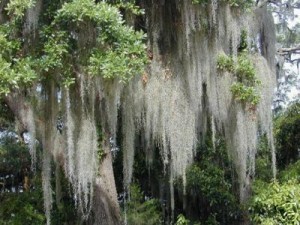
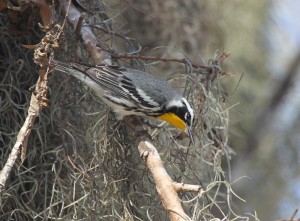
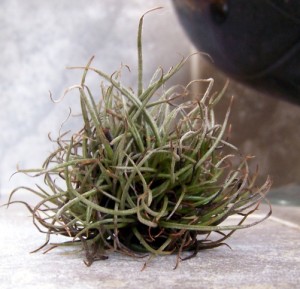

The funny thing about Spanish Moss is that hanging moss has no red bugs but once it is put down on the ground for bedding it is immediately full of red bugs. I don’t use it for ground bedding material……..ever. Itching for days from red bug bites is no fun. If hanging moss is taken and put on a raised platform for bedding, then its not on the ground. But it can be used to insulate things like shelters, just not ground bedding. Dead and dry moss is great for tinder. Just like you, Deane, I get red bug and chigger bites from some grasses in some areas also. Little suckers like to crawl up my shoes and get into my socks so I get bites all over my legs.
I use moss often in flower arrangements, to cover the dirt in potted plants … and even in art.
Here’s my simple trick to get rid of bugs and chiggers: microwave it!
I adjust my time depending on how much I’m using … but a minute or so does the job on a small bowl full.
It works! I’ve never had a bug and I use moss alot!
Folks have used it for years in this area for country decorations, but they always bake it first in the oven to kill the bugs.
Interesting that nail polish works for you. I keep reading the nail polish trick is a total myth. Here’s a google search about it:
Also, regarding Spanish Moss and chiggers: when I was 15, I jumped and pulled a long segment of Spanish Moss from a tree. We’d just moved to FL from north GA, and I’d never seen the stuff. I tucked it into my pants (and underwear, evidently) to amuse my 4yr old sister, making it look like I had a tail. There were definitely chiggers in THAT tree-Spanish-moss.
I don’t care what a google search produces. Cut and paste nonsense is still nonsense. I have been using clear fingernail polish for decades and with works very well for me. It is always in my backpack and I spend a lot of time in the field. I also have never gotten chiggers from Spanish Moss in the tree. Lucky I guess.
I agree I have lived in Florida since I was a babe and clear polish works its the only thing. Suffacates the little bastards.
Yes, fingernail polish works. I have used it on chigger bites on myself more than once. The chigger mite burrows into the skin. The nail polish suffocates them. That is why you must cover twice the area of the ‘bite’, otherwise they will move, as evidenced by a red line. The color does not matter. The first time I got bitten up I only had red polish on hand. I looked like I had the pox on my belly, lol
7th generation Floridian – as long as clear nail polish had been available it has been used as a cure.
Thanks for writing. On a regular basis I get some doctor writing me saying clear fingernail polish doesn’t work. I can think of two reasons why it could. One is that it sequesters the bug. It shall not migrate. Another is that most insects have breathing tubes an if you clog the tubes (oil was used on head lice) it kills them.
Contrary to popular belief, chiggers do not burrow into your skin. The tubes are feeding tubes, not air tubes for breathing. The reason they itch so badly is that those feeding tubes keep the area open and the salvatory enzymes that continue to digest your flesh. Nail polish likely helps as it kind of acts as a scab to close off that tube. Try some absorbine Jr. It was a game changer for me. It is meant as an analgesic to numb sore muscles or back aches, bit works wonders dabbed onto chigger bites. It will sting at first if you have scratched it, but it quickly goes numb and gives you quite some time of blessed relief. I worked with the department of agriculture and forestry department doing insect surveys and ended up deep in the woods or fields covered in chigger bites for years. Some days I would have 50 bites or more driving me absolutely insane and that absorbine jr. helped tremendously especially when I was trying to sleep.
Best course is to use deet or permethrine before going out though because an ounce of prevention is worth a pound of cure.
I live on a 17 acre lake and have chiggers in my yard, all items I find say harmful to fish and marine daily life.
lanocane is the best for chiggers. one application, no more chigger
Hmmm… I have had some luck with fingernail polish, and it apparently does not matter the color. You just have to put enough on to coat the bugger. And yes, it does burn a bit, especially if you scratch first. I have never had any luck with lanacain or other OTC drugstore items.
I always got chiggers from grassy places. Never from trees (those are where the ticks are). So when I am going out to a grassy area during chigger season, I always spray down with DEET containing insect repellant, especially around the ankles and waist. (Missouri chiggers like places where it is tight, such as waistbands, sock tops and the backs of your knee where it bends).
Now, my grandma knew what worked and what didn’t with chiggers. After all, she grew up in hard times and her brother was very much into the old Indian cures. You gotta have some salty bacon grease. (Salt pork grease works well too). Stick your finger into the can of grease and then rub it into the chigger bite. It will begin to itch fiercely, then quit and go away. And did I say the bacon grease has to be salty? As in the old cured bacon? Anyway, it has to be salty bacon grease.
And that brings me to another medical use for salt pork… oh, wait, this is a foraging site…
The birders I went out with many years ago would sprinkle sulfur (sulphur) powder around their ankles and waist and that worked to repel chiggers. My father in Missouri used to wash as soon as he came in the house with good old Castile Soap (Kirk’s Hardwater Castile Soap). I have found both methods work well for me when in chigger country.
For chiggers: take a dog or non-native visitor to walk in front of. You.. Don’t be first mammal in the bush. Reese hart, a local chemist made perfume from Tillandsia usenoides flowers. Must have a hard job collect such tiny blooms
That’s not nice to the dog or the visitor. I would rather get chiggers myself than intentionally give them to someone else (even a dog.)
Good man!
GREEN DEANE! how are you?
thank you for all the great information!
I am curious, how much of this ball moss is edible in one sitting and what kind of nutrition can we expect as a percent of specimen weight ?
Thank you for your help.
sincerely, shs
It’s a nibble not a meal.
I am a chigger magnet, and experienced the pleasure of there company from Kansas to Carolina, never gotten them from Spanish moss, always from grass or brush. Nothing works as well as Deet for keeping them off of me, and I’ve tried everything but salted pork fat. Nail polish will work by smothering them, but if you don’t put on a enough to cover the bite well, they will move over !
I have used it on the mantle at Christmas time, really pretty with white lights, but I put it in the freezer for a month, before, using it. The worst thing is the locals saying IT HAS RED BUGS IN IT !!! I used it on the front door this Christmas no freezing. The tourists I have seen made wigs out of it, very funny !
I am trying it as a screening use on my deer fence on my deck on third floor, I put up so my cat would not jump off. I sprayed it with insecticidal soap. We will see.
Our high school Girl Scout troop tried out a new camp that had camp days every other day. Our camp leader asked if we had eaten pickels the night before to keep the chiggers from causing problems. She said they didn’t like the vinegar taste, and they would let go when they bit you. I’m sorry to say that we made fun of her when she was out of hearing range. However, we paid close attention when we arrived back the next camp day and we all had 200+ chigger bites below our waists and she had 2 on her entire body. She said she had eaten beets with vinegar and said cucumbers & onions with vinegar were also good choices. It’s the vinegar taste they hate. We pooled all they money we had and sent the only camper with a car out to buy the biggest jar of dill pickles they could find. We ate them all day, and most bites were no longer itching by the next day. I’ll never go hiking or camping without vinegar again! Hope this helps!
On the subject of redbugs… When my two aunts were young, they were playing “zoo” one day and the eldest covered the youngest in Spanish moss so she could be a gorilla. She is now in her early seventies, and to this day shudders at the thought of all those redbugs!
One can get red bugs from Spanish Moss on the ground. Usually not from Spanish Moss on the tree.
We live in Michigan. We visited Mississippi recently, and gathered Spanish Moss for mulch on our garden. Will the pesky little chiggers survive in Michigan?
We brought lots-3 garbage bags full. No way to boil, bake or microwave that much.
The freezing temps should kill them.
Howdy most awesome botanist, you are truly the best. Would you be able to refer me to some articles on Ball moss? We have a lot of it growing here in College Station Texas and I would like to learn how to extract its medicinal properties and learn a little bit more about its edible tips. Thank you
Hello Green Deane,
I have the same question as William.
Great information.
Can you please advise on how to get rid of spanish moss or at least try to and how to prevent further growth of it? Is there anything that we can fertilize the tree with that will get rid of spanish moss? It is so heavy on some trees that it does not let the leaves photosynthesize.
Thanks for your help.
Green Deane,
I am conducting an ethnobotanical study on plants all over the globe for the university I attend. This article has really useful information, but I’m curious what primary sources were used to compile this info? Possibly some articles regarding historical significance, and cultural uses of spanish moss?
Can you use Spanish Moss to start seeds in the same fashion as peat?
It has been used for that purpose.
Another temporary remedy for all itches: run extremely hot water (just short of scalding) over the itching area. You will not only get an hour-long relief from the itch, you will feel an enormous pleasure. Dr. John Monette, scientist and historian extraordinaire of 19th century Mississippi, wrote a monograph on Spanish moss as a vegetable in 1845. Anecdote: A few years ago, I led a film crew from a national news organization into the woods. I urged them to spray their bare feet, socks, and shoes, with DEET or similar beforehand. “Nah,” they dismissed me, “we’ve filmed all over the world, we don’t worry about that kind of thing.” The next day, they called in agony begging me for a remedy to the torture of the redbugs, which had covered their feet and legs with bites. One had scratched himself bloody. I said, “First suggestion: next time, pay attention to the natives.”
I have heard stories of biting bugs coming from Spanish Moss I am not sure from the tree canopy. Most so called chiggers/ mites bites could really be seed ticks. Neither borrow in the skin. What is the itchy bite… is the mouth part left behind along with his saliva leaves a irritation to the tissue. Nail polish help seals the irritated area. You have a protective barrier and contact from anything the brushes past it won’t stimulate an itchy frenzy. . Without it, you get the area stimulated and it itches.
This is not a hill you want to die on. It’s a lot like the “rocks in the bottoms of a pot vs. no rocks in the bottom of a pot” argument. Both sides are convinced they’re the right ones and are committed to believing anecdotal evidence as well. Lol. Either way, if it works, who cares if the reason why is wrong?
I got chiggers a lot when I was a kid. My grandmother and mother always used fingernail polish and it worked. Never have I heard of any other treatment for them. I guess because nail polish works!
Hi! Just bought a house with a yard full of live oaks. We had an arborist come out to check them out. He pointed to the Resurrection Fern, said that was good stuff, then said to be on the lookout for Ball Moss and eradicate it if we see it because it will kill the tree. Not sure if it only kills live oaks, but thought this might be useful info as you referenced it. Thanks!
Spanish moss in an ingredient in a supplement I have from Standard Process. It is supposed to help with acid reflux and in healing the lining of the stomach, I believe. I have seen Spanish moss but had never heard of this medicinal use of the plant. Thanks for your very thorough discussion of it.
Does anyone know of a way to treat Spanish Moss to kill any potential bugs while not killing the plant itself? I’m wondering if soaking in insecticidal soap will work to eradicate red bugs if present. It seems like microwaving or freezing would be quick and easy treatments, but I’d guess either of these methods would kill the moss. Also, how can you easily tell if Spanish Moss is alive or not?
Spanish moss from trees does not have red bugs. Dead Spanish Moss turns into a ball of fiber.
My mother use to go out in the country and retrieve Spanish moss every year, My sister inlaw and myself have been harvesting this moss, wash it and boil it for 30 minutes in a big pot, let it rest for about an hour after cutting the pot off, store in refrigerator until use, now I pour a half a mug, 2 spoons of Raw honey and 2 spoons of lemon juice, we drink it every morning to get our day started, our benefits have been that we feel energetic, less inflammation in my legs/knees, we just great from it, try it for yourself.
When I was a child growing up on Anastasia island Saint Augustine Florida, we were surrounded by Oak Forest with magnolias pines and Hercules club. My little friends and I will go up on the hill and become nature children by stripping and draping ourselves in Spanish Moss and then we would run down the hill and through the trails in the woods, so much fun until we were tired and hot and sweaty and then we would dress and go home and our mamas would have to put fingernail polish on all the chigger bites in our groin areas and such they really like those tender bits! That was some 65 years ago and as recently as five years ago I hosted a large Christmas party in a 1915 house I was restoring. I took single strand clear Christmas lights and mixed them with Spanish moss around all the windows on the house and everyone said it look like angel hair glowing!
Also when I was little if I had a stomach ache, my grandmother would have me get a little Spanish moss for the yard and she’d make a tea to soothe my tummy, Always worked!
Came here to learn more about Spanish moss, but saw all the comments regarding red bugs. I spent a lot of time in the Big Thicket as a child and would come back covered with red bugs and ticks. We would take a bath in water with about a cup of Chlorox to kill the red bugs and use fingernail polish for the ticks. Too many red bugs in too many places to paint with the polish, but the Chlorox did the trick, as did the nail polish for the ticks.
Based in Central Southern Africa I have Spanish Moss growing in trees, cacti and as a base in hanging baskets. We have no rain for 6 months of the year thus zero humidity when some gets a bit dried out We use it for mulch, a base for orchids as well as decorative /shade – never noticed it harbouring any bugs!